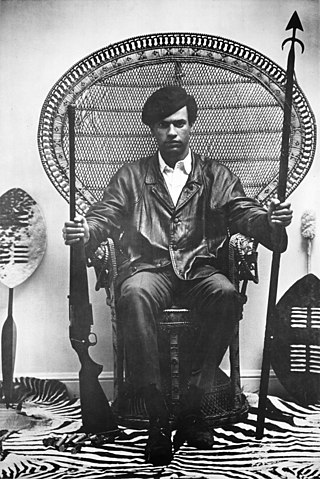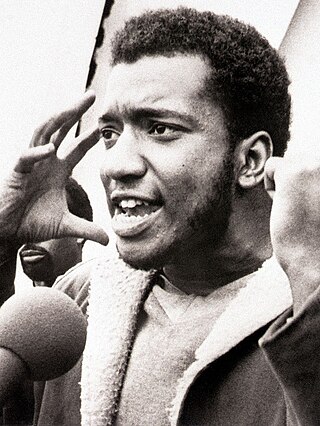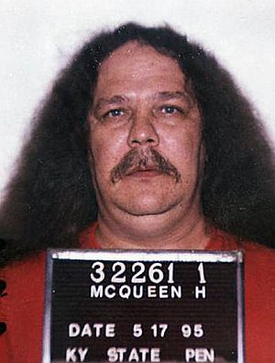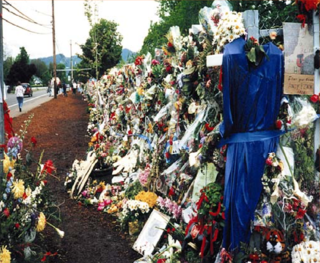Perpetrator

Joseph Thomas Wesbecker (April 27, 1942 – September 14, 1989) was identified as the shooter. When he was 13 months old, his father, a construction worker, died in a fall. [4] After his father's death, he was raised as an only child by his mother Martha, herself only 16 years old at that time, and her family, though he was often passed from place to place during his early childhood, and at one time deposited in an orphanage for almost a year. [6] [4] [8] His grandfather, to whom he felt closely attached, died when he was four. [6]
As Wesbecker was a poor student, he dropped out of high school in the ninth grade, but later managed to earn his G.E.D. [6] [4] In 1960 he started to work as a pressman at a printing plant and married one year later. With his wife he had two sons, James and Joseph. [4] In 1971, he started working at Standard Gravure, where he soon earned a reputation as a determined, hard-working, loyal and reliable worker. [6] [4]
The year 1978 marked the beginning of the downward slope of Wesbecker's life. His marriage ended in divorce and a bitter battle over custody and support for his two sons ensued. [4] It was also the year he admitted himself for the first time to a hospital to seek psychiatric treatment. [9] In 1983, Wesbecker married again; Wesbecker's second marriage also ended in divorce after one year. [4] As a consequence he became increasingly reclusive and suicidal, separated from most of his family members and lived an overall lonely life, in whose center his work remained. [6]
After the selling of Standard Gravure and the subsequent management change in 1986, Wesbecker was assigned to a mechanical folder. He soon complained about stress and undue pressure and asked to be placed back at his old job. His request was declined, and he grew increasingly hostile against the new management, became wary of conspiracies aimed to harass him, and began to complain about policy changes at the company. [6] [4] He started complaining that exposure to toluene at work caused him memory loss, dizziness and "blackout spells". [9]
The hostility culminated in May 1987, when Wesbecker filed a complaint with the Jefferson County Human Relations Commission, charging that he was being harassed and discriminated against for his psychological state and being deliberately put under stressful conditions. A subsequent examination confirmed that Wesbecker suffered from depression and manic depression, substantiating his claim of mental illness. He was prescribed Prozac. [6]
In August 1988, Wesbecker stopped working and was finally put on a long-term disability leave in February 1989, though there was also an agreement to re-employ him as soon as he recovered sufficiently. [6] [4] Between August 1988 and May 1989, Wesbecker bought several weapons, among them the AK-47 and pistol he later used in the shooting. [7] Shortly before the shooting at Standard Gravure, where he showed up the last time on September 13, Wesbecker presumably received a letter from the company, announcing the cancellation of his disability income. [6] [10]
Psychiatric history
Wesbecker had a long history of psychiatric illness and was treated for it in hospitals at least three times between 1978 and 1987. He was diagnosed as suffering from alternating episodes of deep depression and manic depression, was beset, among others, by confusion, anger and anxiety and made several attempts to commit suicide. [6] [9] Hospital records also suggested that Wesbecker posed a threat to himself and others. [9]
According to CBS's 60 Minutes , "In 1984, five years before he took Prozac, Wesbecker's medical records show that he had this conversation with a doctor. Have you ever felt like harming someone else? 'Yes,' Wesbecker said. Who? 'My foreman.' When? 'At work.' The same medical records show Wesbecker had already attempted suicide 12 to 15 times." [11]
In the years prior to the shooting, Wesbecker more than once threatened to "kill a bunch of people" or to bomb Standard Gravure and at one point considered hiring an assassin to kill several executives of the company. Apparently, he even discussed these things with his wife before their divorce. [6] When he left Standard Gravure in August 1988, he told other workers that he would come back to wipe out the place and get even with the company. Shortly before the shooting, he told one of his aunts that he was upset about things at work, and said they will get paid back, but as he said these things all the time, she didn't take the threat too seriously. [4]
One of the employees at Standard Gravure said after the shooting: "This guy's been talking about this for a year. He's been talking about guns and Soldier of Fortune magazine . He's paranoid, and he thought everyone was after him." [12] Three days prior to the shooting, on September 11, Wesbecker told his psychiatrist that a foreman had forced Wesbecker to perform oral sex on him in front of his co-workers to get off the folder. In his notes, the psychiatrist wrote "Prozac?" [13]
Wesbecker is buried in Louisville's Cave Hill Cemetery. [14]










